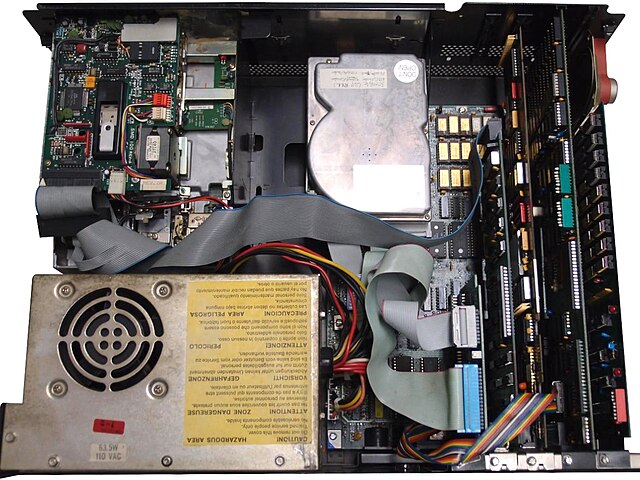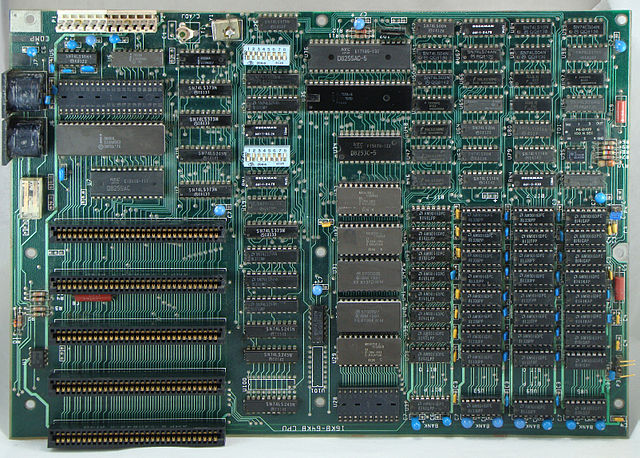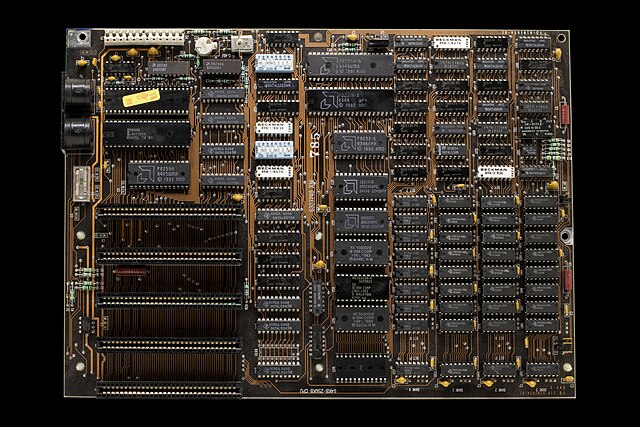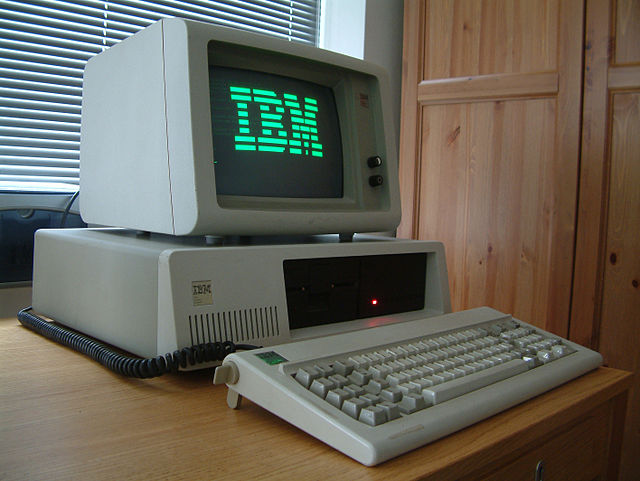IBM PC compatible computers are similar to the original IBM PC, XT, and AT, all from computer giant IBM, that are able to use the same software and expansion cards. Such computers were referred to as PC clones, IBM clones or IBM PC clones. The term "IBM PC compatible" is now a historical description only, since IBM no longer sells personal computers after it sold its personal computer division in 2005 to Chinese technology company Lenovo. The designation "PC", as used in much of personal computer history, has not meant "personal computer" generally, but rather an x86 computer capable of running the same software that a contemporary IBM PC could. The term was initially in contrast to the variety of home computer systems available in the early 1980s, such as the Apple II, TRS-80, and Commodore 64. Later, the term was primarily used in contrast to Apple's Macintosh computers.
The Compaq Portable was one of the first nearly 100% IBM-compatible PCs.
The original IBM PC (Model 5150) motivated the production of clones during the early 1980s.
The DEC Rainbow 100 runs MS-DOS but is not compatible with the IBM PC.
MS-DOS version 1.12 for Compaq Personal Computers
The IBM Personal Computer is the first microcomputer released in the IBM PC model line and the basis for the IBM PC compatible de facto standard. Released on August 12, 1981, it was created by a team of engineers and designers at International Business Machines (IBM), directed by William C. Lowe and Philip Don Estridge in Boca Raton, Florida.
Internal view of the IBM PC (from the back), showing components and layout. This PC has been outfitted with aftermarket floppy and hard disk drives, but the motherboard and most of the expansion cards are stock.
Original IBM PC motherboard with 16 KB RAM soldered and 48 KB socketed, for a total of 64 KB onboard
Later IBM PC motherboard with 64 KB RAM soldered and 192 KB socketed, for a total of 256 KB onboard
IBM PC with MDA monitor








